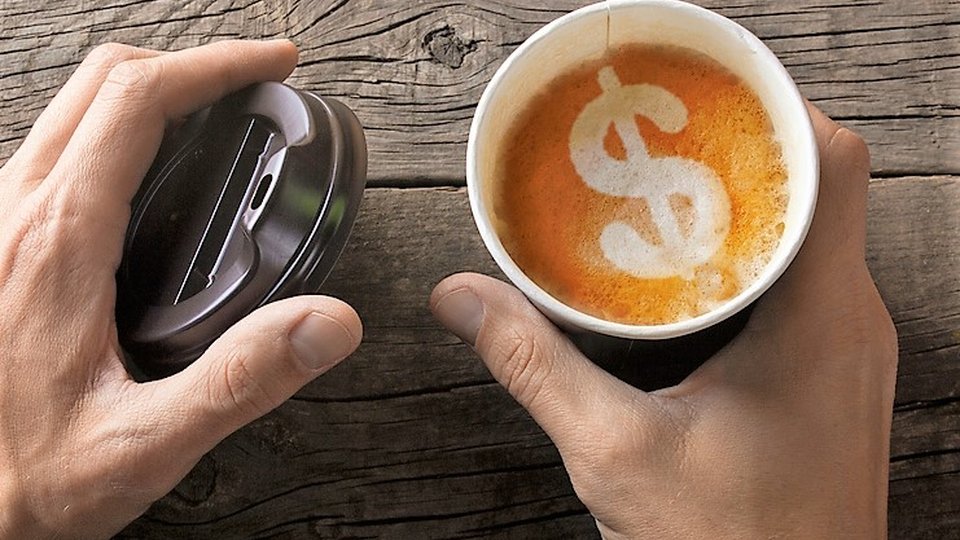Article
Will the pandemic affect coffee sales? 2010 data gives clues
In-home coffee preparation grew during the Great Recession, but consumers did not exit the category. Since then, more coffee offerings have been introduced to the market, boosting consumption.

April 27, 2020 by Elliot Maras — Editor, Kiosk Marketplace & Vending Times
Will the COVID-19 outbreak change consumer coffee consumption for better or for worse?
If past pandemics and recessions are any indication, major changes aren't in the offing, and coffee consumption continues to rise, according to the 2020 National Coffee Data Trends Report. Brands still need to market their benefits as consumers continue to seek premium offerings.
The National Coffee Association recently examined coffee drinking habits from a decade ago, when the country was also in the grips of a dual health and economic crisis.
April 2009 brought the first case of H1N1, known as the swine flu, to the U.S. Three months later, the World Health Organization declared swine flu a pandemic. At the time, the country was also two years into the Great Recession.
NCA reviews consumption data
 |
| Cheryl Hung |
Cheryl Hung, vice president of research at Dig Insights, which conducts the NCA's National Coffee Data Trends study, reviewed coffee consumption habits at the time to determine what impact these events had on coffee consumption, if any, in a webinar.
Before reviewing her findings, Hung said it is important not to assume that previous events will foreshadow consumer response to the current situation since the circumstances are not identical.
The first observation from examining consumption data is that the coffee category is recession resilient, Hung said. "Past day" and "past week" coffee consumption remained steady.
"People didn't stop drinking coffee, but the whereabouts of their coffee penetration shifted," she said. In-home coffee consumption increased while out-of-home decreased.
During the Great Recession, consumers still consumed coffee, she said, and younger ones remained actively engaged in the market.
Coffee offerings expand
One of the most important changes that began around the time of the Great Recession was the growth in the number of coffee beverages, especially in the gourmet segment.
Gourmet beverages became mainstream after 2011, she said. As a result, gourmet coffee consumption has gone from about 40% of total consumption in 2010 to about 60% in 2020. Hence, even during the recession, growth occurred among premium brands.
Premium and value brands grew the most during the 2008-2011 recession, she said. Those brands that were neither "gourmet" nor "value" suffered the most.
"The lesson here is that entering a recession, there is opportunity for premium brands to succeed despite economic conditions," she said.
Consumption of gourmet brands is also largely driven by young consumers.
Impact of consumer finance sentiment
The researchers also examined the impact consumers' personal financial outlook has on coffee consumption, and found that those who felt positive about personal finances drank more espresso-based beverages.
"Feeling confident about your financial situation is clearly linked to espresso-based beverage consumption," Hung said.
While the majority of consumers said they had not made any changes in consumption despite how they felt about their personal finances, the majority of those that did (14%) only changed their in-home consumption. About a third of these consumers changed their out-of-home coffee drinking.
Some consumers did switch to less expensive brands for their in-home purchases.
For those who were negative about their financial situation, when drinking coffee at home, "ritual" and "value" were key reasons for the coffees they chose compared to those consumers who felt better about their finances.
"Consumers indicated some willingness to change their behavior, but very few actually moved away from the category entirely," Hung said. "We know they didn't pull back from coffee completely, but they were still spending on small indulgences to treat themselves."
Among those who were not happy with their finances, 41% were less satisfied with their new choice than their previous choice, while 51% were equally satisfied, she said. Hence, the 41% can be expected to switch back to their previous choice once their financial situation improves.
Coffee as an indulgence
Consumers who feel bad about their financial situation are also more likely to view coffee as a treat or a small indulgence, Hung said. Hence, in a recession, it makes sense to offer coffee that consumers will identify as a treat. Giving oneself a treat was cited in 2016 as the top reason for why consumers who felt bad about their finances buy coffee away from home.
"As people become price conscious, it is even more critical for brands to defend their equity to prevent erosion but balancing the economic realities of the time," she said.
Today, Hung noted, people are making Dalgona Coffee — which is made with four ingredients — while in quarantine, a trend that began in South Korea.
"It perfectly illustrates that even while people are stuck at home we find new experiences to coffee drinking," she said. "Continue innovating."
Lowering price did not deliver higher sales, Hung said. She said doing this possibly causes consumers to question quality.
"Engaging in price wars might not be a way to boost sales," she said.
She reminded listeners that planning for the current situation cannot be based on the past since conditions today are very different.
For an update on how the coronavirus pandemic is affecting convenience services, click here.
Photo: LinkedIn.
About Elliot Maras
Elliot Maras is the editor of Kiosk Marketplace and Vending Times. He brings three decades covering unattended retail and commercial foodservice.


